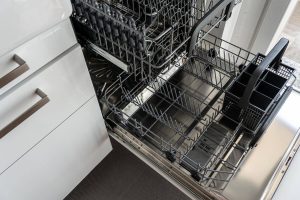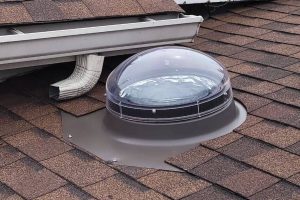When it comes to choosing the perfect furnace for your home, you’re likely to encounter various brands and models. Two popular contenders in the heating industry are Amana and Carrier. Both brands have their own set of features, advantages, and unique selling points. In this comprehensive guide, we will delve into the Amana vs. Carrier furnace debate, exploring their key differences, performance, efficiency, and more. By the end of this article, you’ll have a clearer understanding of which furnace suits your specific needs.
Understanding the Basics
Amana Furnace
Amana is a well-known name in the HVAC industry, with a reputation for producing reliable and efficient heating systems. Their furnaces are designed to provide exceptional warmth during the cold winter months. Amana offers a range of furnace models, each catering to different needs and budgets.
Carrier Furnace
Carrier, on the other hand, is a household name when it comes to heating and cooling solutions. With a legacy spanning over a century, Carrier has consistently delivered high-quality products. Their furnaces are known for their innovation, advanced technology, and energy efficiency.
Efficiency Comparison
When you’re in the market for a new furnace, one of the critical factors to consider is efficiency. The efficiency of a furnace directly affects your energy consumption and, consequently, your heating bills. In this section, we will compare the efficiency of Amana and Carrier furnaces to help you make an informed decision regarding your heating needs.
Amana Efficiency
Amana furnaces are known for their ability to deliver reliable warmth efficiently. The efficiency of a furnace is typically measured by its Annual Fuel Utilization Efficiency (AFUE) rating, which indicates how effectively it converts fuel into heat. Here’s a breakdown of Amana furnace efficiency:
- Entry-Level Models: Amana’s entry-level furnaces typically have AFUE ratings ranging from 80% to 85%. While these models may not be the most energy-efficient, they provide a cost-effective heating solution for many homeowners.
- Mid-Range Models: Amana’s mid-range furnaces often feature AFUE ratings in the range of 86% to 92%. These models offer improved efficiency and can lead to noticeable energy savings compared to entry-level options.
- High-End Models: Amana’s high-end furnaces shine in terms of efficiency, with AFUE ratings that can exceed 95%. These models are designed to maximize fuel utilization and reduce energy waste, resulting in lower heating costs.
Carrier Efficiency
Carrier, a brand renowned for its technological innovation, places a strong emphasis on energy efficiency in its furnace designs. Let’s explore the efficiency of Carrier furnaces:
- Entry-Level Models: Carrier’s basic furnaces typically come with AFUE ratings ranging from 80% to 85%. These models offer reliable heating but may not be as energy-efficient as their more advanced counterparts.
- Mid-Range Models: Carrier’s mid-range furnaces often feature AFUE ratings between 86% and 92%. These models strike a balance between performance and efficiency, making them a popular choice for many homeowners.
- High-End Models: Carrier’s high-end furnaces are where efficiency shines. Some of these models boast AFUE ratings well above 95%, utilizing advanced technology to optimize fuel utilization and reduce energy waste.
It’s essential to note that the actual AFUE rating of a specific furnace model may vary. Additionally, factors such as proper installation, maintenance, and the insulation of your home can influence the overall efficiency of your heating system.
When choosing between Amana and Carrier, consider your budget, your climate, and your long-term energy savings goals. While both brands offer a range of efficiency options, the right choice for you will depend on your specific heating needs and preferences. By understanding the efficiency levels of Amana and Carrier furnaces, you can make a decision that not only keeps you warm but also helps you save on heating costs in the long run.
Performance and Reliability
Both Amana and Carrier have a reputation for manufacturing durable and reliable furnaces. However, there are subtle differences in performance.
Amana Performance

Amana furnaces are known for their consistent heating performance and longevity. They are a reliable choice for keeping your home warm throughout the winter.
Carrier Performance
Carrier’s commitment to cutting-edge technology ensures precise temperature control and quiet operation. Their variable-speed blower motors contribute to enhanced comfort.
Price Range
When it comes to choosing a new furnace for your home, one of the most important factors to consider is the price range. Understanding the cost of different furnace options is crucial in making a decision that fits both your budget and your heating needs. In this section, we’ll explore the price range for both Amana and Carrier furnaces, helping you determine which brand aligns with your financial considerations.
Amana Pricing
Amana is often recognized for offering budget-friendly furnace options. Their product range includes a variety of models to cater to different budgets and preferences. Here’s a general breakdown of Amana furnace pricing:
- Entry-Level Models: Amana’s entry-level furnaces typically start at around $1,500 to $2,500. These models provide reliable heating without the bells and whistles, making them a cost-effective choice for homeowners on a tighter budget.
- Mid-Range Models: The mid-range Amana furnaces, offering improved efficiency and additional features, usually fall in the price range of $2,500 to $3,500. These models strike a balance between performance and affordability.
- High-End Models: Amana’s high-end furnaces, which may include advanced technology and higher efficiency ratings, can range from $3,500 to $5,000 or more. While they come at a higher upfront cost, they often provide significant long-term savings on energy bills.
Carrier Pricing
Carrier furnaces, known for their innovative features and advanced technology, tend to be on the higher end of the price spectrum. Here’s a breakdown of Carrier furnace pricing:
- Entry-Level Models: Carrier’s basic furnace models typically start at around $2,000 to $3,000. These models offer reliable heating but may lack some of the advanced features found in more expensive options.
- Mid-Range Models: The mid-range Carrier furnaces, equipped with improved efficiency and comfort-enhancing features, usually range from $3,000 to $4,500. They strike a balance between performance and price.
- High-End Models: Carrier’s high-end furnaces, offering top-of-the-line technology and energy efficiency, can range from $4,500 to $7,000 or more. While they come with a significant initial investment, they are designed to provide superior comfort and energy savings over time.
It’s important to note that these price ranges are approximate and can vary depending on factors such as your location, the specific model you choose, and any additional installation or customization requirements. When considering the price of a furnace, it’s also essential to factor in long-term operating costs, including energy efficiency and potential utility savings.
Ultimately, the choice between Amana and Carrier will not only depend on your budget but also on your heating needs and preferences. By understanding the pricing options for both brands, you can make an informed decision that aligns with your financial goals while ensuring your home stays warm and comfortable during the colder months.
Warranty
Both Amana and Carrier offer warranties on their furnaces, but the terms and coverage vary.
Amana Warranty
Amana typically provides a limited warranty ranging from 5 to 10 years, depending on the model and components.
Carrier Warranty
Carrier offers competitive warranties, with some models providing up to 10 years of coverage on certain parts.
Installation and Maintenance
Proper installation and regular maintenance are crucial for the longevity and performance of your furnace.
Amana Installation and Maintenance
Amana furnaces are relatively easy to install, and their maintenance requirements are straightforward, making them a convenient choice.
Carrier Installation and Maintenance
Carrier furnaces may require professional installation due to their advanced technology. Regular maintenance is essential to ensure optimal performance.
Conclusion
In the Amana vs. Carrier furnace showdown, the choice ultimately depends on your specific needs, budget, and preferences. Amana offers reliable performance at an affordable price, while Carrier impresses with advanced technology and energy efficiency. Consider your heating requirements and make an informed decision to keep your home cozy during the winter months.
FAQs
Amana furnaces are generally more budget-friendly compared to Carrier.
Carrier furnaces justify their higher price with advanced features and energy efficiency.
Amana typically offers warranties ranging from 5 to 10 years, depending on the model.
Due to their advanced technology, Carrier furnaces may benefit from professional installation.
Regular maintenance is essential for the longevity and optimal performance of your furnace.



